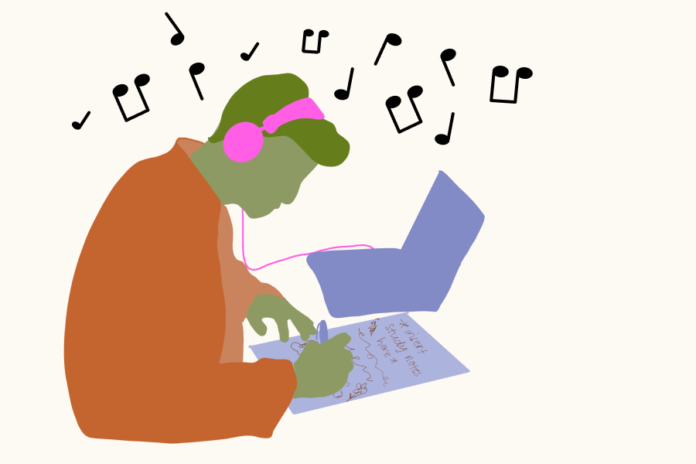How to find inspiration in small, daily rituals
By CORALIE LOON — arts@theaggie.org
The benefits of creativity are numerous — bringing creativity into your day-to-day life can boost your mood, alleviate stress and anxiety and even increase cognitive function. Whether you’re an artist, a poet, a student or just someone who enjoys the catharsis of creative expression, we all know what it’s like to feel stuck creatively.
Rather than staring at a blank page (literal or metaphorical) and trying to think yourself out of a creative funk, sometimes it’s best to tap into the subconscious, emotion-driven aspects of creativity. Here are some tricks to help make creativity feel like a process that happens to you, rather than something you must achieve.
- Create stress-reducing rituals
One of the best ways to make yourself the most receptive to creative inspiration is to relax your mind and body. Stress-reducing rituals can include any of the prompts on this list, or they could be simple moments of pleasure: drinking a hot cup of tea, burning a favorite candle, taking a walk or doing a five-minute meditation.
Doing creative work under pressure can hinder the brain’s ability to create original thoughts, so making relaxing habits and rituals and reducing overall stress can do wonders to enhance creativity.
- Write morning pages
Julia Cameron, the author of “The Artist’s Way,” defines morning pages as “three pages of longhand, stream-of-consciousness writing, done first thing in the morning.” The idea here is that writing for three pages without thinking about what you’re writing or its worth is a powerful way to tap into the subconscious mind, the place that Cameron argues is where creativity comes from.
Three pages may sound daunting, but when I tried it myself, I was surprised to find myself looking forward to it every morning. Each morning felt a little easier, and soon I was uncovering things about my life that I’d never been able to put into words before.
- Foster the poetic mind
For me, the poetic mind is a way of looking at the world as detailed and sensory-oriented. One of the best ways for developing this mindset is to write down glimmers, which author and UC Davis professor Pam Houston defines as “moments that capture her attention, details from the physical world that brought up some resonance in her.” Glimmers can be words or short paragraphs about almost anything: a flower growing in a strange place, an overheard conversation or the feeling of being at a specific place at a specific time.
Try keeping a notebook (physical or not) of daily glimmers, and capture them as you go about your life. There doesn’t have to be a reason to write them down or a purpose to them — they can just be moments that stand out. Glimmers can serve as their own form of inspiration and are a great way to develop ideas for poems, stories or other art pieces.
- Listen to music
Music is a widely available and popular source of inspiration. One way to use music as creative inspiration is by making playlists of songs that give you specific, tangible feelings, rather than just songs that sound good. The more intense the associations that arise when listening to a song, the better. Then, create something (like a drawing or a poem) while listening to each song to capture the associations that come up.
- Make an art date with a friend
When I’m in a creative funk, sometimes collaboration feels like the only way to get out of it. Seeing what other people create gives me ideas and helps me think outside the box.
One of my favorite things to do with a friend is to create art side by side, which is sometimes called parallel play. But a more engaging alternative is to work on one thing together, like a collaborative mural. The less pressure there is to do things “right” in order to achieve a certain outcome, the better. The emphasis should be on spending time together and having fun, and less on what you actually create.
- Consume more (weird) art
They say that if you want to be a writer, one of the best things to do besides writing more is to read as much as possible, and this is probably true for all types of creativity.
Following artists on social media who you admire, reading poetry and surrounding yourself with forms of art that give you that creative rush are excellent ways to gain inspiration, even if you aren’t creating anything. I’ve found that the weirder the art I consume, the more I feel pushed to imagine alternatives and look at things in ways I normally wouldn’t.
- Let your mind wander
This tip is possibly the hardest on this list for me, but one of the most important. The best ideas usually come unprompted when your mind is uncluttered and free to roam.
Things that hinder a wandering mind include overstimulation, multitasking, doom-scrolling on social media and binge-watching TV. alternatively, things that promote a wandering mind include long walks or drives, frequent breaks, occasional boredom and slowing down. By doing less of the former and more of the latter, I’ve found I automatically feel more receptive to inspiration and more creatively available.
Written by: Coralie Loon — arts@theaggie.org




